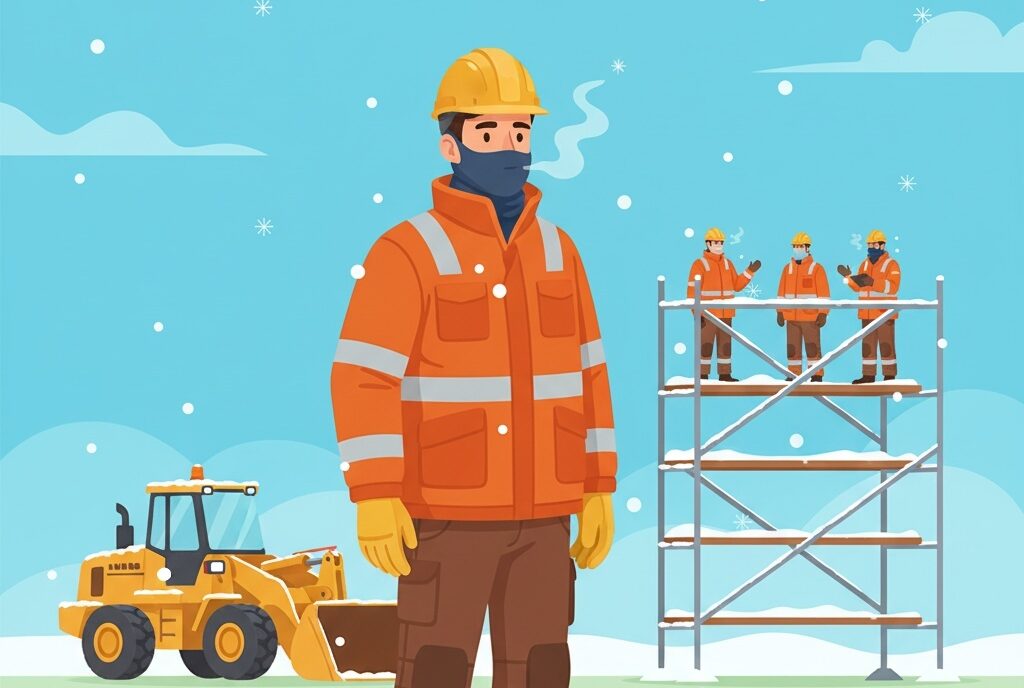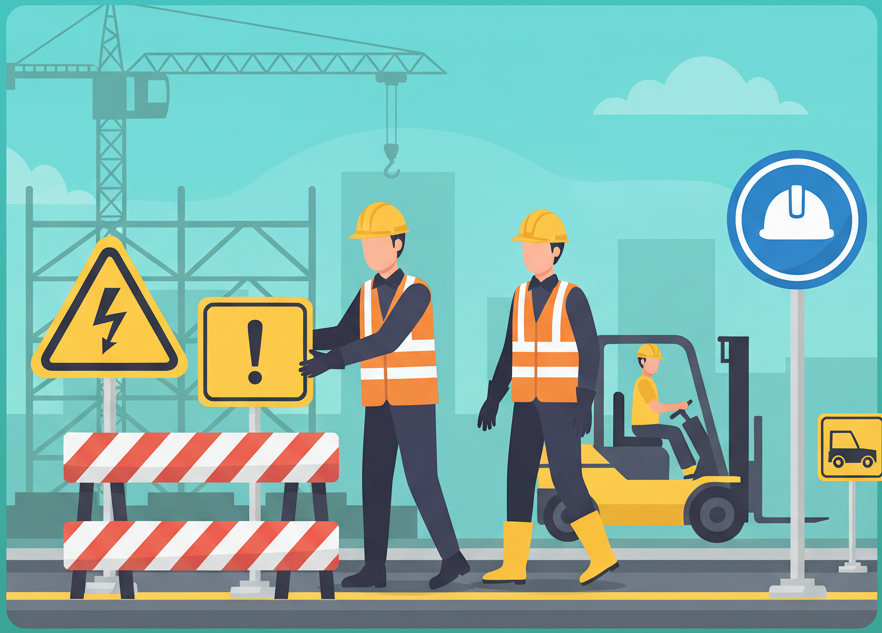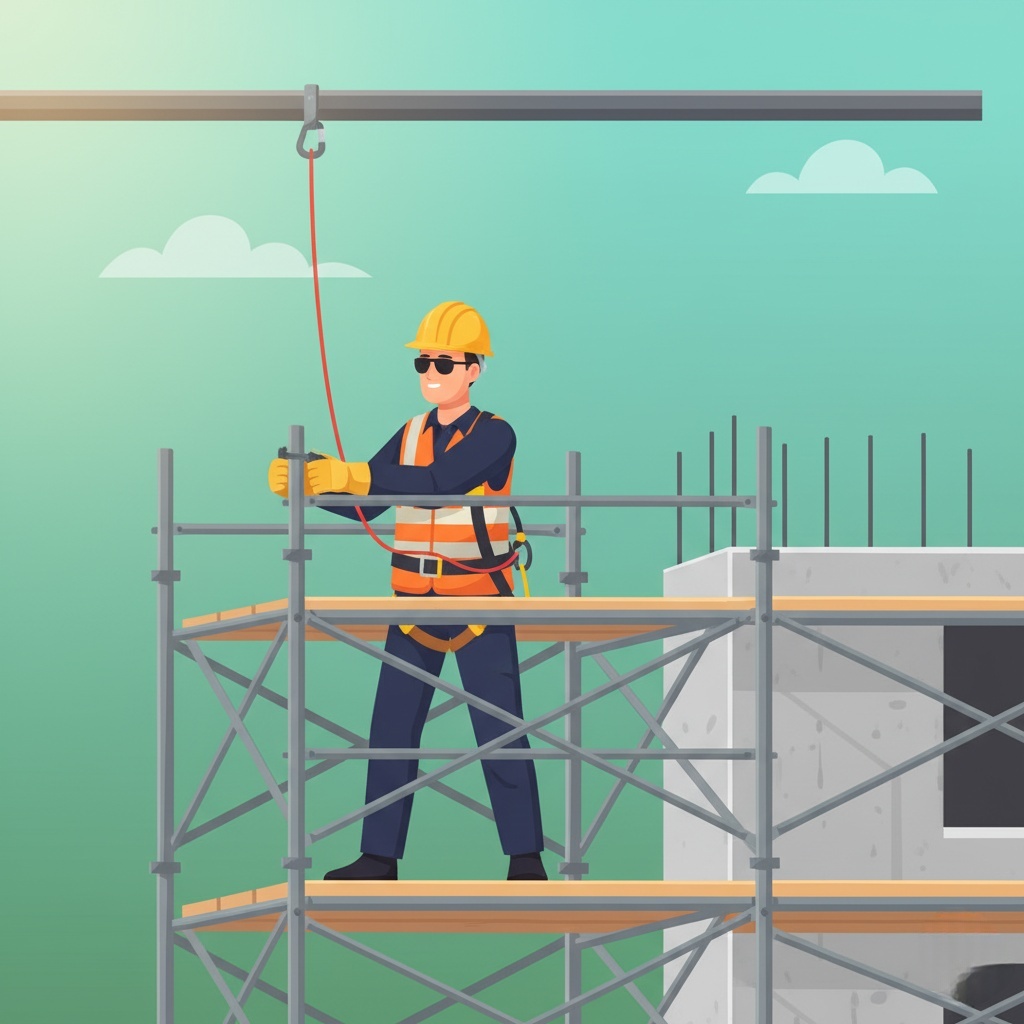Winter on the job site isn’t just about braving the cold—it’s about staying safe while keeping productivity high. From freezing temps and icy surfaces to the risk of hypothermia and frostbite, winter brings its own set of hazards. And these dangers aren’t just a hassle—they can be life-threatening.
According to the Bureau of Labor Statistics (BLS), 22 workers lost their lives in 2020 due to ice, sleet, or snow-related accidents. More than 20,000 injuries that year came from slips, trips, and falls on ice.

That’s why being prepared is key. Here’s what you need to know to keep yourself and your crew safe on the job this winter.
1. Dress Smart: Layer Up the Right Way
Wearing the right gear can mean the difference between staying warm and serious cold stress. The trick? Layering properly. But not all layers are equal—here’s how to do it right:
Base Layer (Moisture-Wicking)
- Use wool or synthetic materials to wick sweat away. Avoid cotton—it stays wet and makes you colder.
- A thermal undershirt and leggings help trap heat where it matters.
Middle Layer (Insulation)
- Go for fleece, wool, or down to keep the warmth in.
- Insulated overalls or a thick sweatshirt add extra protection.
Outer Layer (Weatherproofing)
- A waterproof and windproof jacket is a must. Look for high-visibility options to stay safe.
- Make sure your pants repel moisture too—wet clothes mean cold skin.
Don’t Forget These Essentials:
- Gloves: Insulated, waterproof gloves with a solid grip keep hands warm and functional.
- Boots: Thermal socks and insulated, slip-resistant boots help you stay on your feet.
- Headgear: A warm hat or helmet liner is a must—you lose about 10% of your body heat through your head.
2. Stop Slips, Trips, and Falls
Icy job sites are a serious hazard, and falls are one of OSHA’s “Fatal Four” for construction workers. Here’s how to stay steady:
- Wear slip-resistant boots – Look for rubber soles and deep treads for better traction.
- Use salt or sand – Treat walking areas, especially around ladders and scaffolding.
- Take it slow – Short, careful steps help prevent slipping.
- Hold onto handrails – Always use railings when climbing stairs or equipment.
- Clear snow and ice regularly – Designate a crew to keep pathways safe.
If You’re Removing Snow…
- Use fall protection if working on a roof.
- Shovel in layers to avoid strain.
- Watch out for hidden hazards like skylights or weak surfaces.
3. Know the Signs of Cold Stress
When your body loses heat faster than it can produce, you’re at risk of frostbite, hypothermia, or trench foot. Construction workers are some of the most vulnerable.
Common Winter Workplace Injuries
Condition | Symptoms | Prevention Tips |
Frostbite | Numbness, skin turning white, blue, or black | Wear insulated gloves, keep extremities covered, avoid touching cold metal. |
Hypothermia | Shivering, confusion, slurred speech | Take breaks in a warm area, stay dry, and change wet clothing ASAP. |
Trench Foot | Tingling, redness, swelling, blisters | Keep feet dry, change socks often, and wear waterproof boots. |
How to Prevent Cold Stress:
- Take warm-up breaks in heated areas.
- Drink warm fluids—staying hydrated helps regulate body temp.
- Work in pairs to monitor for early warning signs.
4. Keep Tools and Equipment Running Smoothly
Cold weather messes with tools and equipment. Batteries drain faster, hydraulic systems freeze up, and metal gets brittle.
Winter Equipment Safety Tips:
- Store power tools in heated areas when possible.
- Inspect hoses and electrical cords—cold makes them crack.
- Use antifreeze lubricants to prevent freezing.
- De-ice machinery before starting it to avoid malfunctions.
5. Get Winter Safety Training—It Could Save Your Life
Knowing how to work safely in the cold is just as important as dressing right. Most cold-related injuries are preventable with the right training.
OSHA recommends cold-weather training so workers can recognize risks and follow best practices.
Final Thoughts: Work Smart, Stay Safe
Winter doesn’t have to slow you down—just take the right precautions:
Stay warm, stay safe, and let’s keep the job site accident-free this winter!
FAQs
If you’re shivering, feeling confused, or losing feeling in your fingers and toes, seek warmth immediately.
Training helps workers spot and prevent cold-related risks, keeping them safe and productive.
Check out our Body Protection Safety Training to learn how to stay safe on the job in freezing temps.
Stay prepared, stay warm, and most importantly—stay safe this winter!













